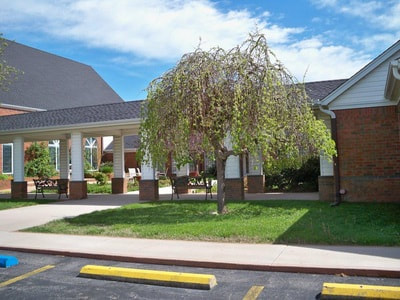|
Ozark Green Thumb BCMG Monthly e-Newsletter |
|
|
|
First Presbyterian Church, 1106 Spring Street, Mountain Home
Master Gardener's are a fun group of folks and enjoy sharing our love of gardening with any visitor. At our meeting we have speakers, refreshments, & fun. Come join us at one of our meetings. Meeting Dates: March 8th. from 1:00 - 3:00 pm Meeting Place: The First Presbyterian Church 1106 Spring Street Mountain Home, AR February Speaker: Jennifer Postelwait, Orchids Master Gardeners Monthly Radio Program: Mountain Talk Radio Mar. 15th on 97.1 7:15 a.m. - 8:am. Master Gardener Host this month are Tommy Hagan and Ceil Gasiecki Directions: From Mountain Home Take US Hwy. 62B East through Mountain Home until you come to Cardinal Street. Cardinal Street is the intersection just past Harp's Grocery. Turn right onto Cardinal Street and travel South until you come to the first stop sign which should be Spring Street. Turn left onto Spring Street and go down the hill past the bridge and the First Presbyterian Church will be on your right hand side. From Gassville: Take Hwy. 62/412 towards Mountain Home. Once you get to Mountain Home continue on into Mountain Home on US 62B. This will take you through town till you get to Harp's Grocery and you come to Cardinal Street. Cardinal Street is the intersection just past Harp's Grocery. Turn right onto Cardinal Street and travel South until you come to the first stop sign which should be Spring Street. Turn left onto Spring Street and go down the hill past the bridge and the First Presbyterian Church will be on your right hand side.
0 Comments
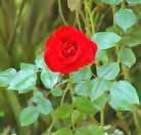 Red Roses: A red rose is an unmistakable expression of love. Red roses convey deep emotions - be it love, longing or desire. Red Roses can also be used to convey respect, admiration or devotion. A deep red rose can be used to convey heartfelt regret and sorrow. The number of red roses has special romantic meanings associated with them. 12 red roses is the most popular of all which conveys "Be mine" and "I love you" 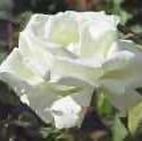 White Roses: White is the color of purity, chastity and innocence. White flowers are generally associated with new beginnings and make an ideal accompaniment to a first-time bride walking down the aisle. White flowers can be used to convey sympathy or humility. They also are indicative of spirituality. Hence, white roses also follow suit. 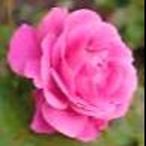 Pink Roses: There are a lot of variations of the pink rose. Over all, pink roses are used to convey gentle emotions such as admiration, joy and gratitude. Light pink rose blooms are indicative of sweetness and innocence. Deep pink rose blooms convey deep gratitude and appreciation. Pink roses also connote elegance and grace.  Yellow Roses: Yellow roses are an expression of exuberance. Yellow roses evoke sunny feelings of joy, warmth and welcome. They are symbols of friendship and caring. The yellow rose, like the other roses, does not carry an undertone of romance. It indicates purely platonic emotions. 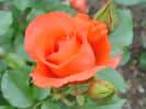 Orange Roses: While a yellow rose reminds us of the sun, an orange rose reminds us of a fiery blaze. These fiery blooms signify passion and energy. Orange roses can be used to express intense desire, pride and fervor. They also convey a sense of fascination. These flowers rival only the red roses as messengers of passion in romance.  Blue Roses: A perfectly blue rose is still elusive like the perfectly black rose. Blue roses cannot be achieved naturally so they represent the unattainable or the mysterious. Blue roses therefore embody the desire for the unattainable. They say "I can't have you but I can't stop thinking about you" 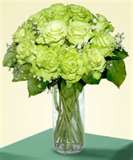 Green roses: Green is the color of harmony, of opulence, of fertility. It is also a color indicative of peace and tranquility. Green roses (these are off-white roses with shades of green) can symbolize best wishes for a prosperous new life or wishes for recovery of good health  Black Roses: Black is the color of death and farewell. A black rose, like the blue rose remains elusive. What we know as black roses are actually really dark red roses. Black roses convey the death of a feeling or idea. Sending black roses to someone indicates the death of the relationship.  Mixed Roses: By mixing rose blooms of different colors purposefully, you can create a bouquet of emotions. For example, a bouquet of red and white roses would mean I love you intensely and my intentions are honorable. A random mix of roses would convey mixed feelings or send a message: "I don't know what my feelings are yet but I sure do like you enough to send you roses." From: theflowerexpert.com
FEBRUARY GARDEN CHECKLIST
For more information on any of the above points, contact the University of Arkansas Division of Agriculture Cooperative Extension office at 425-2335 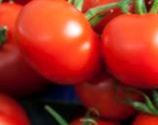 As a rule, the brighter the color of a food, the more concentrated its nutrition. The bright hue of red foods signals lots of nutrition in every bite. Red fruits and vegetables are high in vitamins and minerals, which help turn carbohydrates, fats and proteins into usable energy for the body. These foods also contain antioxidants, which protect DNA from oxidative damage and, therefore, prevent disease. Scientists believe there are still thousands of plant phytochemicals, health-promoting plant substances, that have not been identified. Phytochemicals, including some familiar ones found in red foods--flavonoids, lycopene and resveratrol--have been only partially studied for their health benefits. Tomatoes Tomatoes are an all-around superfood. Eaten alone, in salads, or in sauces, they are low-calorie and packed with nutrients. Tomatoes come in a number of shapes, sizes and varieties (and colors). Red tomatoes contain high levels of lycopene, a relative of beta-carotene, which appears to help fight cancers of the esophagus, prostate and stomach. Lycopene is most abundant in cooked tomato products, such as tomato and pizza sauce, and stews, chili and soups. Tomatoes are also rich in potassium, which is important for heart health. In addition, they contain Vitamin C, which helps support skin integrity and immunity. Red Peppers Raw, grilled, steamed or sauteed, peppers add flavor and color to dishes. They contain high levels of potassium, which supports digestive and heart health, as well as Vitamin A, which is key for good vision. These red vegetables are popping with Vitamin C, which again, helps wipe out disease-causing bacteria. Hot red peppers contain capsaicin, a phytochemical that may fight bacteria through its most notable property--heat. Strawberries Strawberries are low-calorie and loaded with Vitamin C, potassium and folate. The World Dental website says that strawberries may help whiten teeth. The malic acid in strawberries is an effective dental cleaner when mixed with baking soda. Apples Apples are another highly versatile and portable food. They can be baked into pies, mixed into salads, added to yogurt and cereal, or eaten whole. Apples are rich in pectin, a soluble fiber that helps bind LDL cholesterol and send it out of the body. This fruit also contains other heart-healthy substances, such as flavonoids, which are thought to combat free-radical damage to artery walls. Apples come in a number of colors and are all nutritious. Red Kidney Beans A red food that does not immediately come to mind but that still deserves a place on the list is kidney beans. They contain not only large amounts of heart-healthy fiber, but zinc, which supports reproductive health and wound healing. Kidney beans also contain B vitamins, which are key for neurological function. Kidney beans, like their legume cousins, also contain potassium and folate. Watermelon Like tomatoes, watermelon contains cancer-fighting lycopene. It also contains Vitamin A and plenty of Vitamin C. Watermelon is low calorie and can be eaten as a dessert or blended into a rich, sweet juice. Seedless varieties make it easy to enjoy almost anywhere. Pomegranates Pomegranates are delicious and, in recent years, have found their way into supermarkets in a variety of products--everything from the pomegranate fruit itself to pomegranate juice to other pomegranate products. Pomegranates have received attention for their high antioxidant content, but their greatest asset may be their high potassium content. Cranberries The tart cranberry is filled with Vitamin C. Today, dried cranberries have joined the ranks of portable snacks and can be purchased as easily as nuts and raisins. Cranberry juice is notable for its high acidity, which can prevent yeast infections in some women. Raspberries Fresh raspberries' greatest asset is their high fiber content. Raspberries also contain considerable quantities of potassium, zinc and niacin. Raspberries are under study for certain phytochemicals that may prevent cancer. Cherries The deep color of cherries highlights their nutritional content. They contain potassium, calcium and antioxidants. Opt for fresh cherries, however. Avoid the artificially colored sweetened cherries. Red Food Power Many whole foods that are red are naturally low-calorie, low-sodium foods. Two other red foods that are healthful, but do not make the "top ten" list due to certain drawbacks, are red wine and lean red meat. Red wine contains resveratrol, the phytochemical, which appears to be a powerful, heart-healthy antioxidant. The U.S. Department of Agriculture recommends that healthy women limit alcoholic drinks to one a day, and for men, two a day. While wine contains salubrious substances, alcohol in general seems to raise the risk of certain types of cancer, including breast and oral cancers. Lean red meat is loaded with iron and protein, which make it a great food choice. Red meat intake, however, should be limited, since excessive intake has been linked to colon cancer. Red foods showcase the nutritional power of a plant-based diet. When choosing red foods, choose those that are whole foods like fruits, vegetables and legumes, and limit red foods that get their red color through dyes and processing. Read the labels of red chips, packaged snack foods, cakes and other foods that appear unnaturally red. Processed red foods are likely to contain potentially harmful substances as well as other undesirable additives, such as fat, sugar and sodium. By: Christen Cooper, M.S.,R. "10 Healthiest Red Foods" LIVESTRONG.com, 10/03/17. 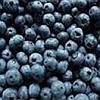 Pruning blueberries is essential in order to maintain their size, shape, and productivity. When blueberry plants are not pruned, they can become overgrown masses of weak, leggy growth with small fruit. However, severe pruning can lead to larger berries but fewer in number. So now, the question you may be asking is, "How do I prune blueberry bushes enough but not too much?" HOW DO I PRUNE BLUEBERRY BUSHES "How do I prune blueberry bushes" is one of the most commonly asked questions when growing blueberries. Knowing how to prune blueberries is important; proper pruning of blueberries can make the difference between an average crop and a plentiful one. The type and amount of blueberry plant pruning, however, may depend on the type and size of the bush. For trimming blueberries, you should remove any lower growth to prevent fruits from settling on the ground. When pruning blueberries, you'll want to allow light to penetrate the center of the plant. This means any criss-crossing branches should be removed to allow for more sunlight and better air circulation. Also, cut out any short, soft shoots developing from the base of the bush late in the season. Prune off canes and twigs that have been damaged by winter injury, diseases, insects, etc. In addition, prune out unproductive canes that have not produced any new growth. Generally for blueberry plant pruning, you should remove the two oldest canes each winter. In the first two years, adequate pruning will help train blueberry bushes into the most desired shape for promoting maximum fruit production. WHEN IS THE BEST TIME FOR BLUEBERRY PLANT PRUNING? Pruning should be done annually, beginning at the time plants are set. the best time to prune is in late winter to early spring (January to early March) after all chance of severe weather has passed. However, trimming blueberry bushes throughout the growing season may be necessary to maintain overall health and vigor. For instance, throughout the growing season, any weak or low-growing shoots should be removed as well as dead, diseased or insect- infested canes that may be found. Mature bushes, on the other hand, typically require more selective cuts to maintain a desired shape and productive fruiting.
Now that you know a little more about pruning blueberries, you can have healthy and productive blueberry bushes. By: Nikki Tilley Gardening Know How  This is a hearty winter night dinner. Use fully cooked sausages for this dish, such as smoked bratwurst or mild poultry such as chicken apple. But any flavor will work This is great with dumplings!
1. Pour oil into a 10 to 12 inch ovenproof frying pan over high heat.
When hot, add onions and stir often until slightly limp and beginning to brown, about 4 minutes. 2. Stir in stout and thyme; cook untill liquid is reduced by about half, 3 to 5 minutes. Stir in salt and pepper to taste. 3. Prick sausages all over with the tip of a sharp knife and arrange on a single layer on onions mixture. 4. Bake in a 375 degree oven until sausages are heated through (cut to test), about 20 minutes. Sprinkle with parsley and serve.  An easy make ahead dessert for Valentines Day.
Line 24 mini-muffin tins with paper liners.
Beat cream cheese with sugar until fluffy. Beat in egg. Beat in chocolate. Stir in yogurt. Spoon in 1 tablespoon mixture into each liner. Bake in preheated 350 degree oven until set, 40 to 45 minutes. Let cool on wire rack. Refrigerate over night. Makes 24 mini -cakes. |
Archives
April 2022
|
|
